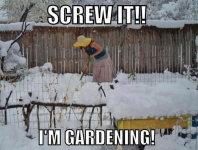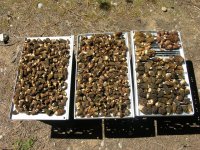You’ve made it to
Day 7 of the Joyful Gardener Event! Today’s our second-to-last video and it will be a GOOD one. It’s all about harvesting
more vegetables and herbs with less work.
If you want to dig right into the yummiest lesson of them all, go to this video...
>>> Harvesting and Pruning to Improve Yields
Now before we start, we have a small mini-lesson to share with you from today’s video...
Have you ever seen or read
Pride and Prejudice? Who didn't love this book (and the movie too)!
If you haven’t, here's a short summary…
Elizabeth Bennet is a young woman in 18th century England whose parents are looking to marry her and her sisters off to gentlemen from “good” families. Fitzwilliam Darcy is just such a man… but during their first meeting he has a LOT of flaws.
He seems arrogant, awkward, and inconsiderate. Elizabeth to say the least, is completely turned off.
...but as she gets to know him and “prune” away his cold, gruff exterior she finds a trustworthy, honorable man and falls in love with him.
And it turns out you could have just as easily written this story for your garden too.
Not sure what this means?
Well just like Mr. Darcy, if you don’t give your plants a good pruning and harvest at the “right time,” your garden will…
 Grow less food for your family
Grow less food for your family
 Leave a weird or bitter taste in your mouth (like Mr. Darcy)
Leave a weird or bitter taste in your mouth (like Mr. Darcy)
 Become more vulnerable to pests & other unwelcome guests
Become more vulnerable to pests & other unwelcome guests
BUT if you do a little bit of work pruning & planning your harvest, you’ll get…
 Bigger vegetables
Bigger vegetables
 Bonus salad greens for the whole season
Bonus salad greens for the whole season
 Harvests that taste so sweet and delicious, you’ll never look at grocery-store veggies the same ever again!
Harvests that taste so sweet and delicious, you’ll never look at grocery-store veggies the same ever again!
Here’s the secret to pruning… when you prune your plants (after they reach “adolescence” of course)
you’re helping them grow!
You see when you get rid of small, dying, or pest-ridden stems and leaves, you are
freeing your plants...
...Because they don’t have to give precious energy, nutrients, or water to that leaf or stem!
Which means that they can then grow bigger, tastier, and more nutritious fruit!



And that’s just one thing that proper pruning does. It also has terrific advantages for preventing pests from entering your garden too (more on that in today’s video).
It’s a true “superpower” when it comes to gardening. Which is why in today’s video you’ll…
 Discover simple pruning tips to promote plant growth and increase your harvest.
Discover simple pruning tips to promote plant growth and increase your harvest.

Know when your harvest is perfectly ripe so you don’t waste food.
 Watch how you can get multiple harvests out of a single plant.
Watch how you can get multiple harvests out of a single plant.

See how to pick for peak flavor… what no one tells you about harvesting.
 Identify the different crop families so you know HOW to harvest what (different plants like to be picked differently!).
Identify the different crop families so you know HOW to harvest what (different plants like to be picked differently!).
That’s just the beginning though. The lessons you’ll learn in
Episode 7 of the Joyful Gardener docuseries will help you KEEP more of what you’ve grown than ever before.
*Which is one reason why this is a FAVORITE lesson for seasoned gardeners who join the
Grow Your Own Vegetables course.*
When you’re ready to see how to get the most out of your garden, go here:
>>> Harvesting and Pruning to Improve Yields
 growyourownvegetables.org
growyourownvegetables.org






















